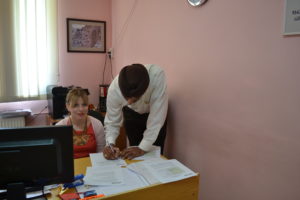TB patients on second-line treatment experience a significant number of adverse effects. Some TB medicines result in adverse effects that, if not continuously monitored, can become serious and/or permanent and may hinder patient adherence to treatment. A number of other risk factors can also impact the safety of patients taking TB medicines, including drug interactions and co-morbid conditions such as HIV, hepatitis C, and diabetes, which weaken the immune system and can worsen the severity and frequency of adverse events. With the emergence of new medicines and commodities for TB management, such as bedaquiline, it is critical to implement effective strategies to prevent adverse effects, monitor medication safety, and promote patient adherence to treatment. The limited capacity of national drug safety authorities in some countries and the need for guidance on monitoring medicine toxicities are common problems. Despite these challenges, SIAPS has used a number of tools and approaches to improve medicine safety and build stronger health systems in the area of pharmaceutical management and services.

At the global level, SIAPS contributed to the WHO publication Active tuberculosis drug-safety monitoring and management (aDSM). Framework for implementation to provide the necessary support and guidance to national drug safety authorities. In addition to the WHO guidance, SIAPS conducts aDSM trainings in countries where it works and helps those countries ensure widespread accessibility of new TB medicines, such as bedaquiline, to patients in need. Georgia, where SIAPS has been working on aDSM and introducing bedaquiline for the past year, has seen increased capacity to manage patients on new medicines and manage adverse medicine reactions to improve patient outcomes. SIAPS works with Georgia’s national pharmacovigilance (PV) committee and national TB program (NTP) to improve patient outcomes, build health care provider skills in aDSM, and track adverse reactions to new TB medicines and regimens.
- Patients targeted for aDSM should undergo active and systematic clinical and laboratory assessment during treatment to detect drug toxicity and adverse events.
- All adverse events that are detected should be managed in a timely manner to deliver the best possible patient care.
- Standardized data should be systematically collected and reported for any detected serious adverse event (SAE). These will eventually be used to characterize the types of SAEs, assess the safety of the treatment, and inform future policy on the use of these medicines.
World Health Organization (2015). Active tuberculosis drug-safety monitoring and management (aDSM). Framework for implementation. Geneva, Switzerland WHO/HTM/TB/2015.28
Last quarter, SIAPS saw a sharp increase in SAEs in Georgia. The recording and reporting of aDSM primarily targets SAEs as a core requirement (WHO, 2015). As of December 2016, 73 SAEs had been reported by 48 patients. From September to December 2016, 36 SAEs were reported compared to 37 SAEs reported from April 2015 to September 2016. This significant increase in SAE recognition and reporting came after countrywide aDSM trainings conducted by SIAPS between August 24 and October 8, 2016, at which SIAPS, through the human resource capacity of the USAID/SIAPS-supported Phthisiologists and Pulmonologists Association of Georgia, trained more than 275 health care providers across Georgia. SIAPS significantly increased health care provider capacity to recognize and report SAEs that would have been missed prior to training and, as a result, underreported. Having a systematic approach to collect and report adverse event data and use that information to improve treatment regimens is vital to ensuring medicine safety in TB patients.
In addition to better overall recognition of SAEs by health care providers, their capacity to recognize and report nonfatal SAEs improved following the SIAPS trainings. Of the 36 SAEs reported in the last quarter, none were fatal, compared to the majority of reported SAEs that were death reports prior to the trainings. By building in-country capacity to proactively identify and manage adverse effects, public health programs are able improve patient safety, medication adherence, and patient outcomes, thereby reducing transmission and disease burden and minimizing the emergence and spread of drug resistance.
In addition to building clinician capacity, SIAPS worked to strengthen health system processes and management around aDSM. Close coordination of aDSM activities with country-level PV structures is essential to avoid overlap and duplication. Following the August–October 2016 trainings, the PV committee saw an increase in requests for routine support and supportive supervision by doctors completing SAE forms. This is in contrast to previous quarters, when clinicians contacted SIAPS directly for technical support. Previously, the most frequently requested assistance by doctors was correctly choosing the appropriate SAE classification and assessing causality when there was a concomitant treatment for comorbidities. To further support the NTP and PV committee, SIAPS is developing nine job aids for the most common anti-TB medicine toxicities. These job aids will list all medicines and medicine groups (other than TB medicines) that can cause the same adverse events. This will help guide the reasoning process of TB doctors while assessing the causality in complex comorbidity cases of TB patients receiving treatment for other diseases.
Health programs that systematically monitor patient safety can better prevent and manage medicine toxicities as well as improve health-related quality of life and treatment outcomes by taking early action to avert treatment interruption and other unfavorable patient outcomes (WHO, 2015).
–Kelly Sawyer, SIAPS Technical Advisor for Tuberculosis

